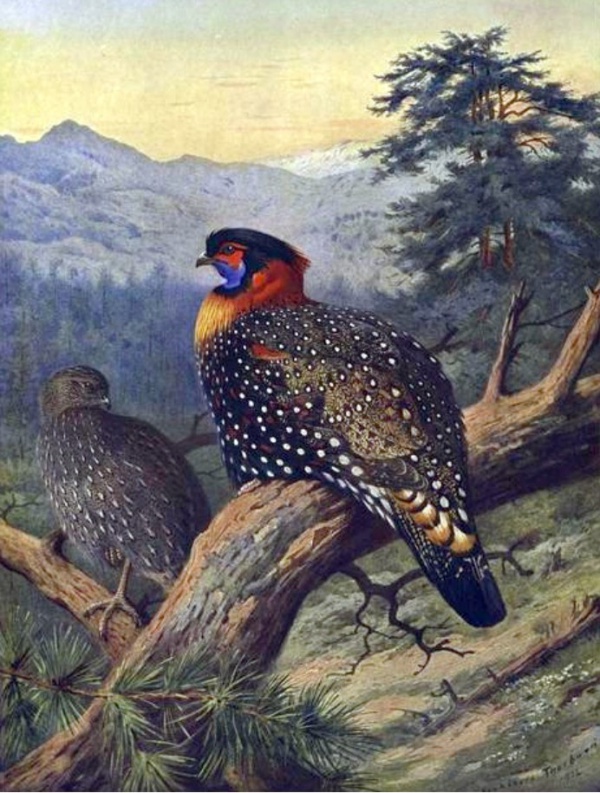Facts About Western tragopan
The western tragopan, also known as the western horned tragopan, is a remarkable pheasant species native to the Himalayan region, ranging from northeastern Pakistan to Uttarakhand in India. These birds are celebrated for their distinctive appearance: males showcase dark plumage ornamented with white spots and vivid crimson patches, while females exhibit brownish-grey feathers marked with black spots and white streaks. Males typically weigh between 1.8 to 2.2 kg, whereas females range from 1.25 to 1.4 kg.
These pheasants thrive in dense forests at elevations between 1,750 and 3,600 meters. Their diet primarily comprises leaves, shoots, seeds, insects, and other invertebrates. They prefer to roost in trees, particularly during the nesting season. To attract mates, males perform elaborate displays, inflating their throats to reveal vibrant purple lappets and blue horns. The breeding season takes place in May and June, with nests commonly constructed in low tree hollows.
Unfortunately, the western tragopan is critically endangered, with fewer than 5,000 individuals remaining worldwide. Their survival is imperiled by habitat destruction and human activities. Regarded as the rarest living pheasant, this species occupies a very restricted range and holds cultural significance in regions such as Kashmir, Chamba, and Kullu. To protect these birds, they are listed under CITES Appendix I, which aims to prevent the trade of their feathers. Conservation initiatives, including captive breeding programs, are being implemented to ensure the survival of this magnificent species.

 Iran
Iran